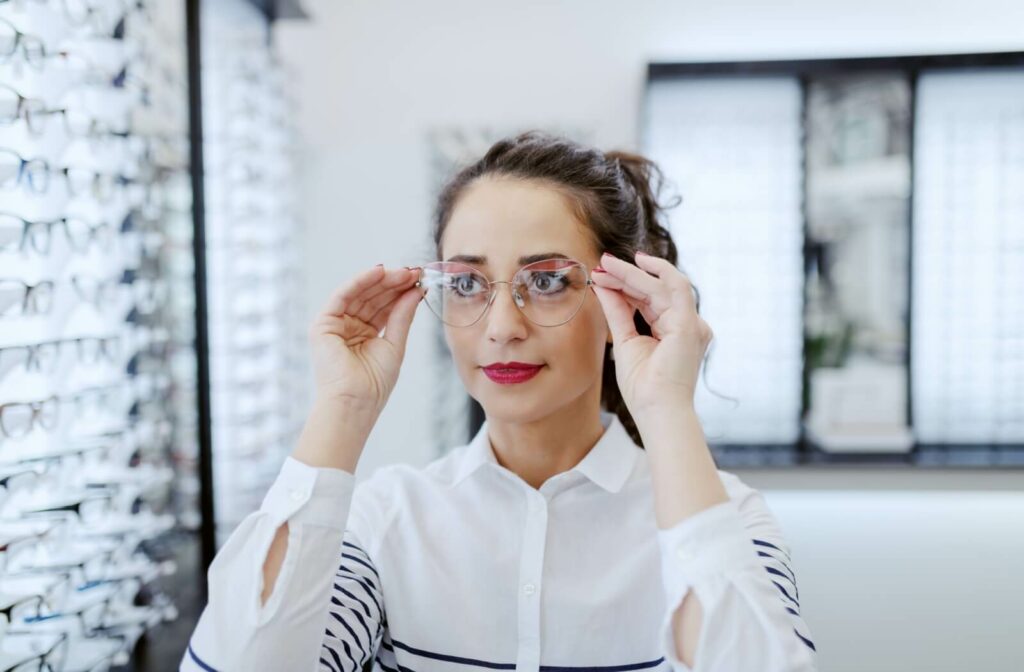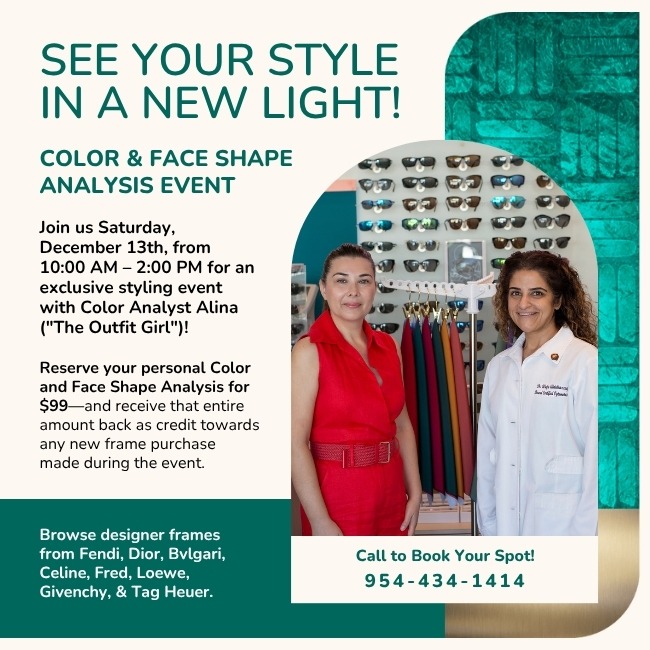Millions of people around the world rely on glasses to help them see clearly at a distance. Eyeglasses are an essential tool in managing myopia. Not only do myopia glasses correct your vision so you can see clearly, but specialized lenses can also help slow the progression of nearsightedness to prevent future complications of severe myopia.
There is no way to reverse myopia but your eye doctor can help you see clearly with glasses or contact lenses. There are also methods available to prevent the refractive error from worsening.
What Is Myopia?
Myopia, commonly referred to as nearsightedness, is a refractive error that affects the eye’s ability to focus light. This condition occurs when the eyeball is slightly elongated or the cornea is too curved, causing light to focus in front of the retina instead of directly on it.
People with myopia typically have difficulty seeing distant objects clearly, while close-up objects remain sharp and clear. Myopia is a common vision issue that can develop in childhood and often progresses over time. Fortunately, with proper diagnosis and management, its effects can be controlled, allowing for a clearer and more comfortable visual experience.
How Do Regular Glasses for Nearsightedness Work?
Eyeglasses designed for myopia correction use concave lenses. These lenses are thinner at the center and thicker at the edges, which helps refract (bend) light outward. By diverging the light just enough before it enters the eye, concave lenses adjust the focal point, ensuring it lands squarely on the retina.
This correction compensates for the elongated shape of a myopic eye, allowing for clear vision of distant objects. The degree of curvature in the lens corresponds to the strength of the prescription, measured in diopters. The higher the minus number, the stronger the lens needed to correct more severe myopia.
Types of Lenses Used in Myopia Correction
Not all lenses for myopia are created equal. Depending on your prescription and lifestyle needs, you may encounter the following lens options.
Single-Vision Lenses
These are the most common types of lenses used for correcting myopia. They are designed to provide crisp, clear vision for a specific distance, typically for outdoor activities, driving, or watching TV.
It’s essential to note that single-vision lenses do not slow the progression of myopia. For myopia control, bifocal or other specialized lenses are required.
High-Index Lenses
For people with stronger prescriptions, high-index lenses offer a thinner and lighter alternative. They reduce the bulky “Coke bottle” appearance while still providing effective vision correction.

Photochromic Lenses
These lenses darken in sunlight, serving as both prescription sunglasses and regular glasses. Photochromic lenses can be a great choice if you frequently transition between indoor and outdoor environments.
Blue-Light Filtering Lenses
For those who spend long hours in front of screens, blue-light filtering lenses can help reduce eye strain and promote eye comfort while still correcting myopia.
Each of these options can be tailored to your unique vision needs, and your optometrist can help you decide which is best for your prescription and lifestyle.
Eyeglasses as Part of Myopia Control
While many people view glasses as a quick fix for blurry vision, they also play a critical role in myopia control strategies. Eyeglasses are the first step in managing myopia for many, allowing them to see clearly without invasive treatment or added complexity.
But as myopia progresses—which it often does, particularly in children and teenagers—regular eyeglasses alone may not be enough.
Studies suggest that addressing myopia early and effectively can help slow its progression. This not only reduces the need for stronger prescriptions over time but also lowers the risk of associated complications, such as an increased likelihood of developing cataracts or retinal detachment later in life.
Managing Progressive Myopia with Stronger Prescriptions
Updating prescriptions regularly is often essential for those with myopia. In particular, children and young adults may outgrow weaker lenses as their eyes develop.
Advancements in lens technology now offer specialized glasses designed to slow the progression of myopia. When combined with other management strategies, such as increased outdoor time or atropine eye drops, myopia control glasses serve as an effective part of the overall treatment plan.
Harnessing the Power of Glasses for Myopia
Eyeglasses remain a trusted, noninvasive, and simple solution for managing myopia. By understanding the mechanics of lenses and the variety of options available, you can make more informed decisions about your eye care.
If you or your child experiences frequent prescription changes or worsening eyesight, it’s crucial to talk to your optometrist early. Regular eye checkups can help you stay ahead of your eye health and explore advanced options, like myopia control lenses, as needed.
Request an appointment with our team at EyeQ Optical to discuss how proactive management of myopia can protect your or your child’s vision for years to come. Whether you need a first pair of glasses or are looking to explore specialized options, we can guide you every step of the way.




